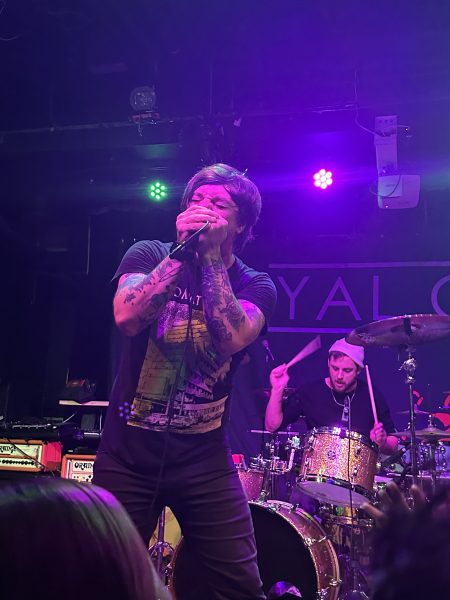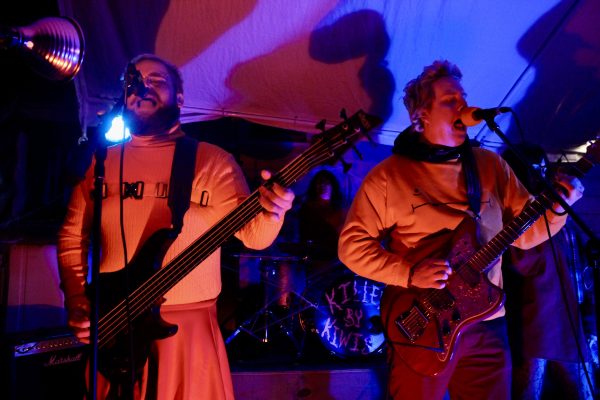Professors and art up close
Professor Kaori Kenmotsu has dedicated her artistic career to connecting with other communities and building new ones. From working with young individuals to professing in higher education, her practice is motivated by helping others to connect with their bodies, minds and movement in addition to connecting with the people that surround them.
May 8, 2021
Working in the artistic field for roughly 25 years, Hamline University’s Senior Lecturer of Dance and Theatre and Artistic Director for the Hamline Dance Ensemble, Professor Kaori Kenmotsu, has accomplished so much in her career. While there are many lessons to learn from her in and out of the arts, she continues to find herself teaching and learning more about dance, art and the ways that they intersect with other aspects of life.
Kenmotsu emphasized how the arts are fundamental to different communities. She talks about the ways that it is helpful to other areas of practice as well as how it builds relationships between those different fields.
“Before I was at MRAC [Metropolitan Regional Arts Council], I was a community organizer in South Minneapolis. I did a lot of Lake Street revitalization and I was an economic development organizer,” Kenmotsu said. “So to me, I think there’s always been a bridge about how arts begin to develop communities, but also creative processes are utilized in strategic planning. I’ve always been interested in those intersectionalities.”
Among art forms able to bridge the gap between different fields and communities, Kenmotsu found that dance was key to connecting different social groups. During her mid-20s, she worked with a dance company that would teach at after school programs. While working at these after school programs, Kenmotsu noticed that dance brought together the separated student groups.
“What I realized was that the use of movement in my field was actually breaking down all of these silos. I think they were in their own silos of their own social groups and what we ended up figuring out was that we could use dancing as a way to bridge that,” Kenmotsu said. “It was really a powerful experience and I feel like those experiences formed my teaching pedagogy.”
Although these experiences may have been challenging for Kenmotsu, they were crucial to developing her approaches to teaching.
“The biggest experience for me, in terms of understanding how to teach and the bridge that art can do, were my community [education] classes for kids,” Kenmotsu said. “One of the things that I learned in that process was that I could never say that I’m going to teach ‘modern dance.’ The students would ask ‘What is that? Can you teach hip hop?’ What I realized was that I was actually teaching the kids and the students how to be in their own bodies.”
These experiences have also shaped the ways in which Kenmotsu teaches her students at Hamline University.
“I feel like it’s a fundamental way of how I teach. It is integrated into my DNA as a teacher. At Hamline, I’ve been really trying to foster student creativity like producing work and helping going through creative processes. In the last five years or so I’ve been really intrigued and interested in how movement, somatic education and the training of the physical body can be used outside of the arts,” Kenmotsu said. “I’ve been really interested in ideas of what I call embodied practices of conflict negotiation, how somatic education can be used in different areas besides artistic realms.”
When asked about what kind of goals she sees for herself in the future, she talks about her fascination with the intersectionalities of art and other subjects, and how those intersectionalities connect with one another.
“I’m at that point in my career where I’m really interested in the intersectionality between arts, community and law with the bridge of how do we teach?” Kenmotsu said. “How can somatic education, embodied practices begin to heal and help bridge communities? How do I take the work in the arts and move it beyond stage and studio? That is something I’ve been exploring and inquiring about in my own research and in my own activities outside of Hamline.”
Currently, Kenmotsu is finishing her third year of law school on top of teaching at Hamline. She decided to get her J.D. (Juris Doctor) with a focus on alternative dispute resolution. She has been exploring the different ways that the arts can be used to bring the body into these fields that go beyond performing and entertainment.




